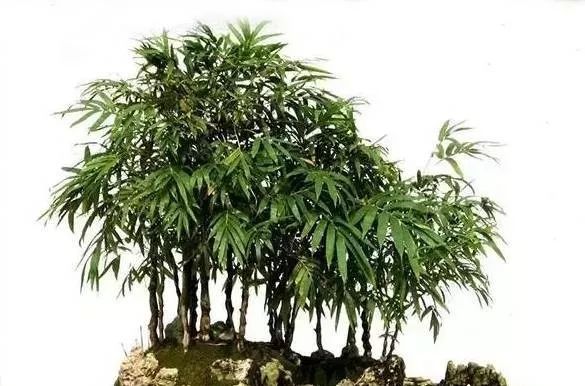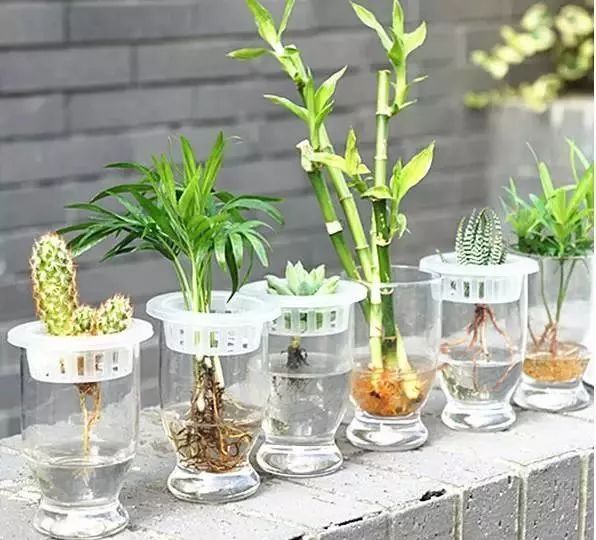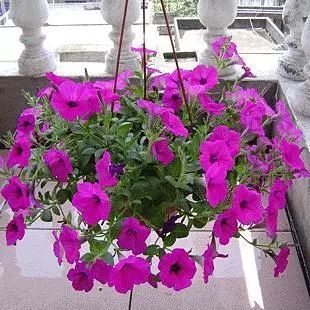You can't live without bamboo and raise a pot of Buddha belly bamboo with good meaning and good looks.

The oddity of Buddha's belly bamboo lies in that the upper end of each bamboo joint grows into a bamboo gourd, like a potbellied Buddha Du, so it is named Buddha's belly bamboo. The whole column of bamboo is like a string of beads on an abacus. In the old days, some people held a Buddha's belly bamboo in their hands as a killing stick to show exorcism and evil.
The plant is short and elegant, the internode expands, like Buddha belly, the shape is strange, the posture is beautiful, the four seasons are green, the time potted plant and the production bonsai excellent material, also is the southern planting arrangement courtyard ideal material.
The maintenance of Buddha belly bamboo bonsai mainly pays attention to its environmental control, watering master, plastic skills and other contents:
(1)Environment.
The newly planted Buddha belly bamboo bonsai, after watering, placed in the shade for about 10 days, and then placed in a semi-shady and semi-sunny place for 5 days, and then placed in a sunny, ventilated, warm and humid environment for careful maintenance. Because the pot is shallow and the soil is small, it is easy to damage the roots in the sun in summer, so it is necessary to properly shade. At the end of autumn and early winter, when the minimum temperature drops to about 5℃ at night, it should be moved indoors, and the room temperature should be kept at about 8℃. The room temperature is too high to grow in the coming year. In the south, as long as the pot buried in the sun leeward soil, you can safely winter.
(2)Watering.
Buddha belly bamboo likes moisture, often watering, keep the soil moist, but the basin can not accumulate water. Summer is its growth period, high temperature, morning and evening should be watered once. After winter moves into the room, foliar dust is much, want to appropriate to foliar spray water, make blade maintains verdant beautiful.
(3)Fertilization.
Buddha belly bamboo bonsai fertilization should not be too much, too much fertilizer makes branches and leaves steep long, affecting the beauty, 3~9 months, apply a decomposed thin liquid fertilizer once a month.
(4)Plastic surgery.
Buddha belly bamboo grows faster, the shape of branches should not be cut off in time, so as not to consume nutrients. New bamboos can be decided according to their shape. If the nodes are short and big, although they affect the shape, they should be kept and replanted in September. If the new bamboos are thin and long, they should be cut off in time.
(5)Pest control.
Buddha belly bamboo pests and diseases are less, mainly bamboo borers, aphids, scale insects, to get rid of in time.
How to raise the Buddha belly bamboo section short belly big, especially good-looking?
1. Cut off autumn buds
The budding occurs twice a year, the first time in early summer and the second time in early autumn. Under the condition of proper maintenance, the new bamboo nodes growing in early summer are short and big, while the new bamboo nodes sprouting in early autumn are long and thin, so it is appropriate to cut them off.
2, apply alum fertilizer
Bamboo buddha originated in the south, like weak acid soil, but the northern soil is weak alkaline. Therefore, alum fertilizer should be applied several times to make the soil weakly acidic.
3. Control watering
Control watering when bamboo shoots are exposed to the pot soil to keep the pot soil dry. When the bamboo leaves are in a state of water shortage, put the bamboo in a cool place for a while, spray water on the leaves, irrigate the water after 1 hour, and maintain it in a sunny place for 5-6 days the next day. Repeat this for many times. When the new bamboo grows to the ideal height, resume normal watering.
4, pointed at the right time
When the new bamboo grows to about 80% of the ideal height, cut off the top of the bamboo shoot by 5 - 8 cm to promote the growth of lateral branches. After the first sharpening, the lateral branches grow quickly, and the second sharpening should be carried out. According to the height requirement of the whole plant type, cut off the upper part at 2 or 4 nodes to promote the growth of secondary branches.
5. Remove the bamboo shoots
Bamboo shoots have a thin skin on the outside of each node, which is called bamboo sheath. When the shoot grows to a certain height, one or two of the sheaths at the base of the shoot can be peeled off, and one more can be peeled after 7-10 days.
Source: Internet invasion and deletion
- Prev

It turns out that cactus water culture is actually better than soil culture. Don't miss it ~
Recently, I have received many inquiries from flower friends about hydroponics (water culture) flowers, such as how to raise copper money grass? How to grow water in good fortune?... Now, let me share with you a few super good and beautiful hydroponic plants. Don't be afraid to rot, wash your roots...
- Next

Petunia can be raised in this way in summer to quickly fill the pot.
Petunia is a perennial herb of the genus Solanaceae, which is often cultivated in 2012. Its plant is short, the flowers are dense, the flowers are bright and colorful, and it looks extremely beautiful. Especially in summer, petunia is the most exuberant season.
Related
- Wuhan Hospital Iron Tree Blooming Result Was Instantly Frightened by the Gardener Master
- Which variety of camellia is the most fragrant and best? Which one do you like best?
- What is the small blue coat, the breeding methods and matters needing attention of the succulent plant
- Dormancy time and maintenance management of succulent plants during dormancy
- Minas succulent how to raise, Minas succulent plant pictures
- What are the varieties of winter succulent plants
- How to raise succulent plants in twelve rolls? let's take a look at some experience of breeding twelve rolls.
- Attention should be paid to water control for succulent plants during dormant period (winter and summer)
- Watering experience of twelve rolls of succulent plants
- Techniques for fertilizing succulent plants. An article will let you know how to fertilize succulent plants.

